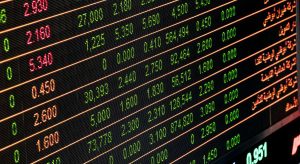How To Reduce The Risk Of FX Trading

Risks that impact the FX market
Trading in FX comes with a risk, as many businesses and investors will find. The market comes with peaks and troughs that you will have to know how to manage correctly so that you can reduce the risk that comes with this currency market. FX risk generally refers to the transactions that companies make outside of the currency they trade in, and this risk can become more enhanced if the business does not manage these currencies correctly. There are several risks that come into play when trading FX that we will look at in more detail below, to give you an idea of how you can make them work for you and reduce your overall risk.
Hedging
Hedging is a process of offsetting the losses or gains that can take place when trading from one currency to another. This is a process that many businesses choose to implement depending on how large their risk is when it comes to losing money. There are a few ways in which companies can choose to hedge their currency so that they can remain financially stable, including options, futures, and short positions. Hedging allows companies peace of mind that they are protected from various risks, allows them to budget accurately, and means they can take advantage of currency fluctuations. This is one way of reducing the risk, but what are the others?
Time risk
Managing your time risk allows you to increase your return on investment. It refers to how volatile a currency is. As a rule, the more volatile, the greater the time risk. To manage this risk correctly, you should choose to trade with more stable currencies. Look for currency pairs that have a downward trend – only if it is consistent. This can help you to identify the economies that are more stable and pose your company less of a risk.
Liquidity risk
Your liquidity risk involves the market as a whole – which makes it harder to manage. FX markets and stocks are both highly liquid, with stocks being some of the most fluid. Because of this, you can use them to measure whether a currency is on the up, or it’s struggling in a slower economy. There is always a risk in FX trading that you will make a loss during times of economic downturn as people become more hesitant to purchase, creating what we call a bear market – meaning the economy is slow. During this time, it’s best to ensure your trading is diversified, so you can spread the risk and reduce potential losses.
Interest rate risk
You must know how to manage your interest rate risk when it comes to reducing your risk of loss when trading FX. Interest rates are always changing, which makes it more difficult to predict how it’s going to have an impact on a currency. A lot of managing interest rate risk is watching trend lines and considering which are trending up. This can help you to consider whether you should buy or sell FX.












Leave a Reply
Want to join the discussion?Feel free to contribute!